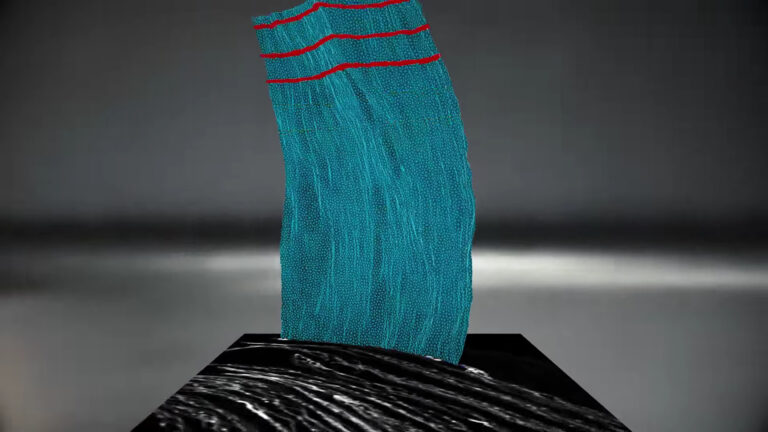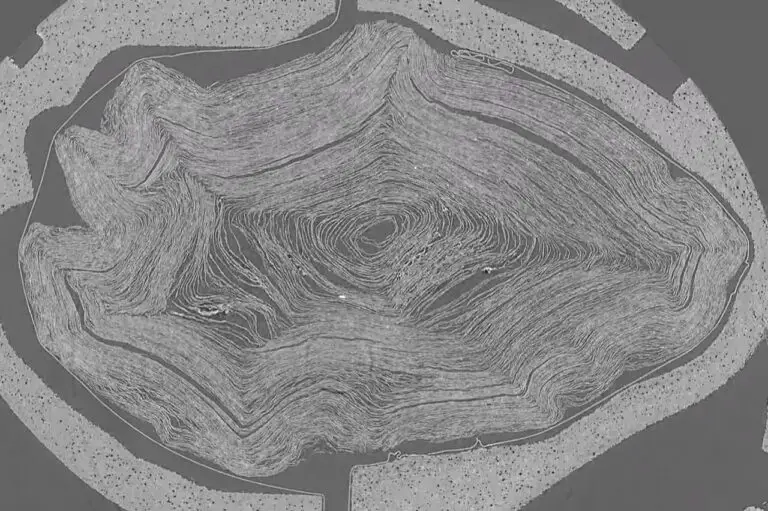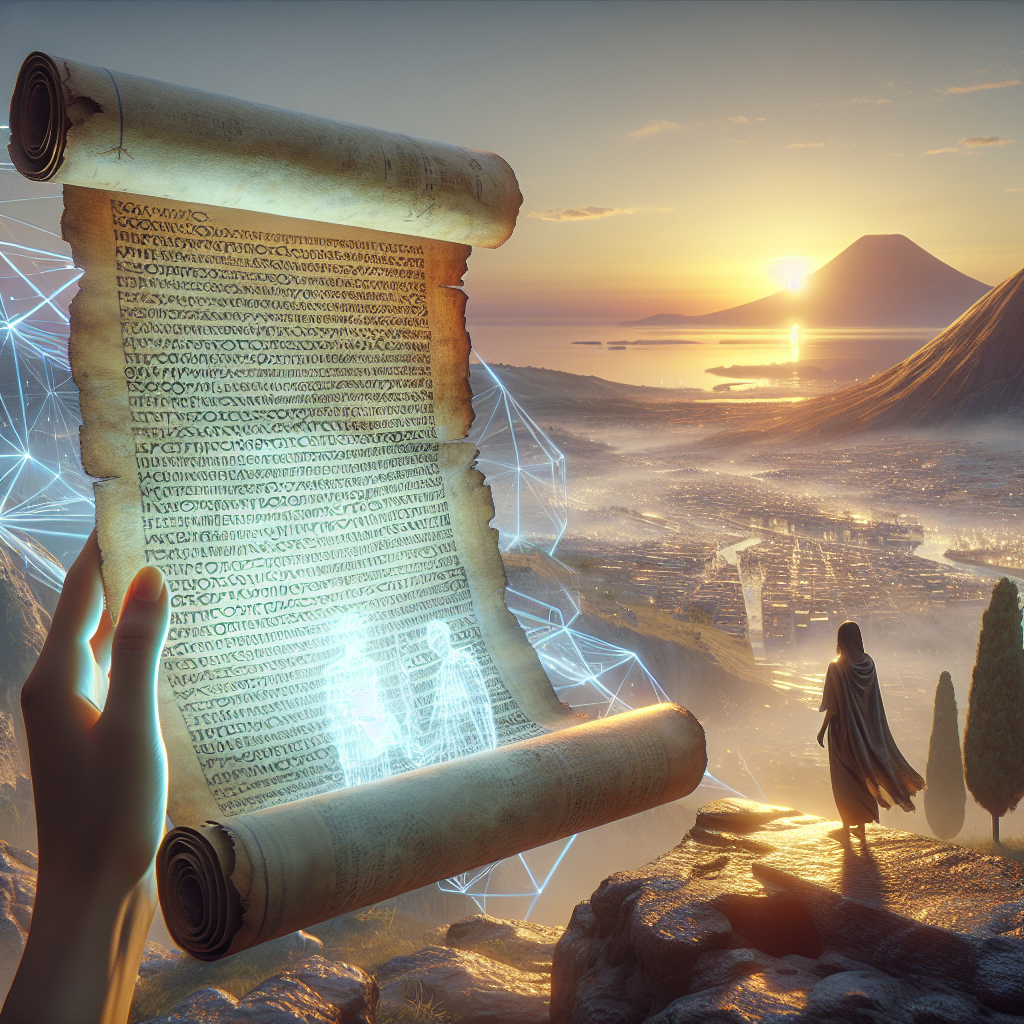Exploring Historical Mysteries with Machine Learning
As we delve into the depths of history, machine learning emerges as a powerful tool that sheds light on ancient civilizations. The ability to decipher long-lost languages and texts has been significantly enhanced by this technology, providing us with new insights into our past. A prime example of this synergy between technology and historical research is the analysis of ancient Roman texts, which have been preserved and are now being revealed through the innovative use of machine learning.
Unlocking the Secrets of the Past with Machine Learning
The intersection of technology and history has opened up new avenues for exploring the past, particularly through the use of machine learning to decipher ancient texts. A remarkable example of this is the reading of ancient Roman texts from carbonized scrolls that were unearthed in Herculaneum, a city that met its fate under the ashes of Mount Vesuvius in AD 79. These scrolls, preserved yet rendered incredibly fragile by the volcanic eruption, have long posed a challenge to researchers due to their propensity to disintegrate upon handling. However, the advent of machine learning has provided a non-invasive means to peer into these delicate artifacts, offering a glimpse into the literary world of antiquity.

The Virtual Unwrapping Process
The innovative process of virtually unwrapping the ancient Roman scrolls begins with detailed imaging using a particle accelerator. This sophisticated technology is crucial in visualizing the internal structure of the carbonized papyri without physically unrolling them, which could lead to their destruction. The imaging data is then processed using tomographic reconstruction algorithms, transforming the X-ray photos into a 3D volume of voxels. This results in a stack of slice images that represent the scroll’s layers in a flattened, virtual state.
Following the creation of these virtual layers, the next critical step is Ink Detection. Here, a machine learning model is employed to discern the inked regions on the papyrus, which are often indistinguishable to the naked eye. This step is pivotal in identifying the ancient writings without the risk of damaging the scrolls.
- Scanning the scroll at a particle accelerator
- Using tomographic reconstruction algorithms to create a 3D voxel representation
- Unfurling the layers virtually to produce flat papyrus images
- Applying machine learning for ink detection on the virtual papyrus

The Vesuvius Challenge
The Vesuvius Challenge represents a groundbreaking competition that has galvanized the academic community, encouraging teams of researchers to apply their expertise in machine learning and computer vision to decipher the ancient texts within the Herculaneum scrolls. Participants were given a deadline until midnight on January 1, 2024, to submit their findings. Following this, a panel of eminent papyrologists undertook the meticulous task of reviewing each entry to ensure the accuracy and readability of the results.
The stakes were high, with the winning team awarded a substantial prize of $700,000. This significant sum reflects the challenge’s importance and the value placed on unlocking the historical secrets held within these fragile artifacts.
The team that emerged victorious, consisting of Youssef Nader, Luke Farritor, and Julian Schillinger, distinguished themselves with a submission that was unanimously recognized by the judges as the most legible and informative. Their approach, which synthesized various methods and models, was instrumental in producing the clearest results from the rolled-up scroll remains.
Technological Innovations and Discoveries
The journey to successfully read the ancient Roman scrolls was marked by several technological breakthroughs. A pivotal discovery was the identification of a crackle pattern within the scrolls, which provided a new perspective on how to approach their virtual unwrapping. Building upon this discovery, researcher Luke Farritor utilized a GTX 1070 GPU to further the team’s efforts in decoding the texts, demonstrating that even older technology can contribute significantly to modern research.
The winning team of the Vesuvius Challenge capitalized on the combined knowledge of these innovative approaches to produce the most definitive results. Their success was attributed to the integration of various methods and machine learning models, which together facilitated the detection of ink on the rolled-up papyrus and allowed for clearer text extraction.
This collaborative effort not only showcased the power of interdisciplinary research but also underscored the potential of machine learning in the field of historical document preservation and analysis. The winning team’s methods have set a new standard for future endeavors in uncovering the mysteries of the past.
With the success of the initial efforts, the stage is set for the 2024 Vesuvius Challenge Grand Prize, which aims to dramatically expand our understanding of the ancient scrolls. The ambitious goal is to increase the deciphered content from the current 5% to an astounding 90% of all four scanned scrolls. This represents a significant leap forward in the quest to unlock the full narrative of these historical documents.
The content that has been read so far sheds light on the philosophical musings of the time, specifically on Epicureanism. The texts discuss the nature of pleasure, suggesting that scarcity does not inherently make something more pleasurable than that which is abundant. This insight into the Epicurean view of life emphasizes the enjoyment of simple pleasures, such as the act of eating, and reflects a broader contemplation on the human experience.
The revelations from these ancient texts not only enrich our understanding of Roman society and philosophy but also connect us to the timeless human pursuit of happiness and fulfillment. As researchers continue to apply advanced technologies to these relics of the past, we can expect to uncover more wisdom that has been preserved through the ages.

